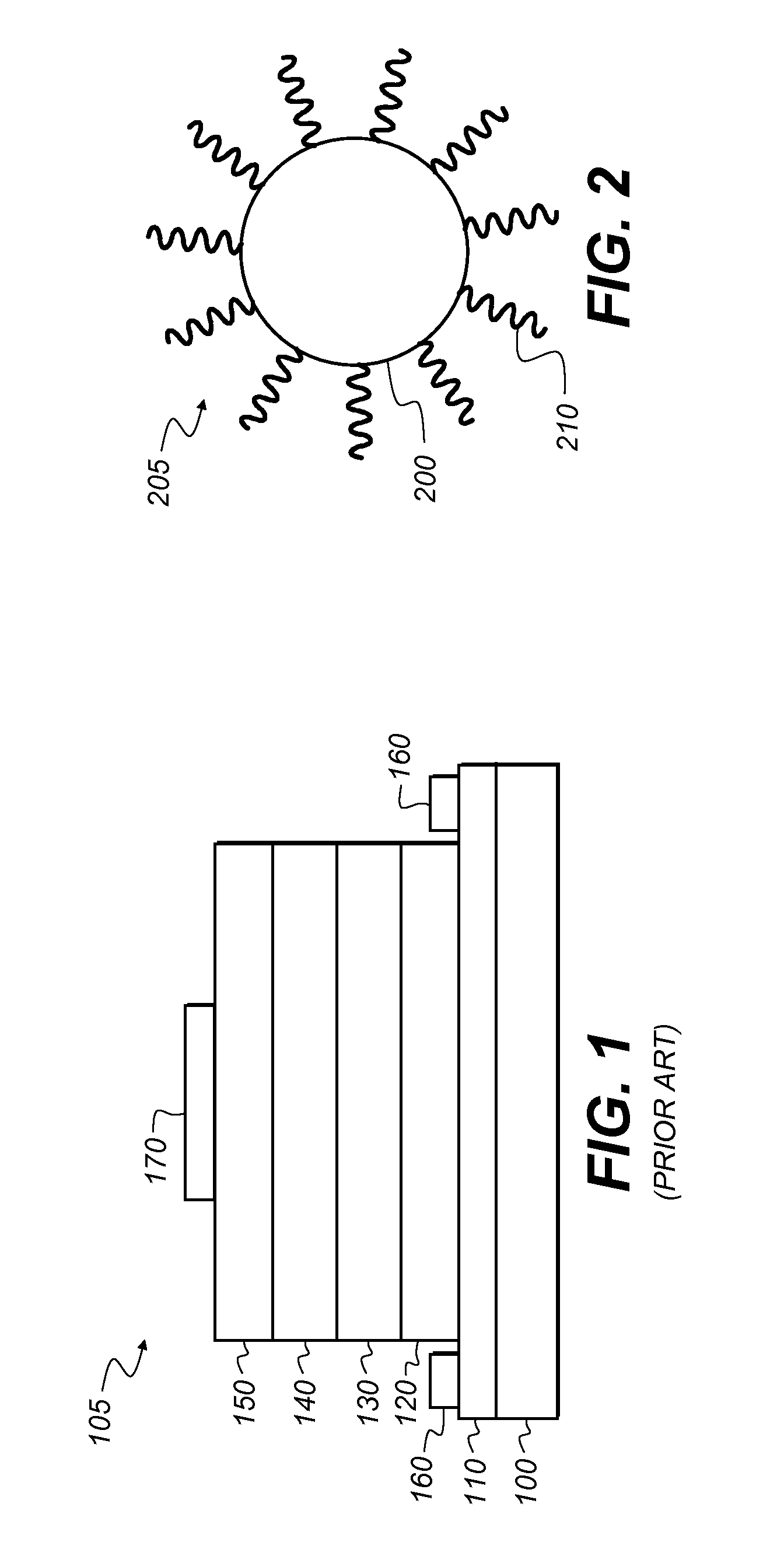Preparing large-sized emitting colloidal nanocrystals
a colloidal solution and nanocrystal technology, applied in the direction of chemistry apparatus and processes, light emitting compositions, etc., can solve the problems of poor efficiency, poor efficiency, poor efficiency, etc., and achieve high emission efficiency, narrow size distribution, and crystallinity high
- Summary
- Abstract
- Description
- Claims
- Application Information
AI Technical Summary
Benefits of technology
Problems solved by technology
Method used
Image
Examples
example 1
[0073]The cadmium precursor is cadmium acetate, the zinc precursor is Zn(Et)2, and the selenium precursor is TOPSe. The coordinating solvent for the growth is a mixture of trioctylphosphine oxide (TOPO), trioctylphosphine (TOP) and stearic acid. TOPO and TOP are degassed at 190° C. for 60 minutes prior to their usage. Inside a dry box, 0.046 g (0.2 mmol) cadmium acetate and 3 g stearic acid were added into a three-neck flask. The flask was placed on a Schlenk line and vacuum was applied. The mixture went clear after heating at 100° C. for 5-10 minutes. After cooling down, the flask was transferred into the box, and 1.1 ml TOPO was added. The mixture was degassed at 100° C. for 30 minutes. After switching to argon overpressure, the flask contents were taken up to 350° C., and 1 ml TOPSe solution in TOP prepared by dissolving 0.7896 g (10 mmol) Se in 10 ml Top in the dry box was added into the solvent mixture by injection from a syringe as quickly as possible, followed by the injectio...
PUM
| Property | Measurement | Unit |
|---|---|---|
| diameter | aaaaa | aaaaa |
| aspect ratio | aaaaa | aaaaa |
| diameter | aaaaa | aaaaa |
Abstract
Description
Claims
Application Information
 Login to View More
Login to View More - R&D
- Intellectual Property
- Life Sciences
- Materials
- Tech Scout
- Unparalleled Data Quality
- Higher Quality Content
- 60% Fewer Hallucinations
Browse by: Latest US Patents, China's latest patents, Technical Efficacy Thesaurus, Application Domain, Technology Topic, Popular Technical Reports.
© 2025 PatSnap. All rights reserved.Legal|Privacy policy|Modern Slavery Act Transparency Statement|Sitemap|About US| Contact US: help@patsnap.com



